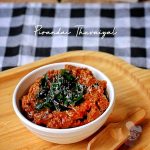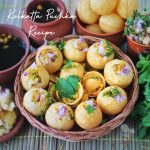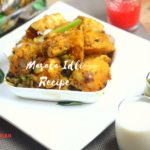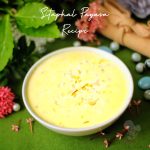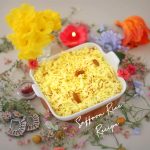Make a tour to kanchipuram and enjoy the nutritious kachipuram idli with an array of accompaniments while you explore the glory of silk it its purest form..It is worth taking the trip, and both your eyes and palates will have a sensational experience at one go.. and the colours and taste will last in your memory forever.. Capture the epic moments to cherish the golden memories forever...
Table Of Contents:
1. Kanjipuram idli
2. An Insight Into The Glorious Kanjipuram
3. The Authentic Kanjipuram Cuisine
4. The Origin And History Of Kanchipuram Idli
5. The Prevalence And Popularity Of Kanjipuram Idli
6. Kovil Style Kanjipuram Idli: Its Global Reach And Fame
7. Kanjipuram Kovil Idli During The Kings' Rule
8. Needed Ingredients To Make Kanchipuram Kovil Idli
9. Step Wise Directions To Make Kanchipuram Idli
10. Pro Tips
11. Faqs
12. Health Benefits Of Kanchipuram Idli
13. Suitable Accompaniments For Kanjipuaram Idli
14. Fantastic Beverages That Can Be Paired With Kanjipuram Idli
15. Delectable Desserts That Go Well With Kanjipuram Idli
16. Innovative Ideas To Make A Variety Of Kanchipuram Idlis
17. The Characteristics Of Kanchipuram Idli
18. Little Ideas To Serve Kanjipuram Idli
19. Takeaway
20. Nutritional Value
"Kanjipuram Temple Idli, a sacred offering to the Gods, is not just a dish, but a sensory experience that transcends the palate and nourishes the soul."
An Insight Into The Glorious Kanjupuram:
Kanchipuram, also known as Kanchi, is a town in Tamil Nadu, India, known for its rich cultural heritage and beautiful temples. It was called as Ghatikashthanam in olden days which means a "place of learning", as it was the center of education. The town has a glorious past and is considered one of the seven sacred cities in India.
Kanchipuram is renowned for its silk sarees, traditional cuisine and ancient temples, which are a testament to the town's artistic and architectural excellence.
The town is home to more than 1000 temples, each with its unique style of architecture and history. Some of the most famous temples in Kanchipuram include the Kailasanathar Temple, Varadharaja Perumal Temple, Kamakshi Amman Temple, and Ekambareshwarar Temple. These temples are not only places of worship but also hold cultural and historical significance, attracting thousands of devotees and tourists every year.
Kanchipuram is also known for its delectable cuisine, particularly the Kanjipuram Idli, a specialty of the town, which is made with a unique blend of spices and is offered as prasadam in the Varadharaja Perumal Temple. The town's traditional cuisine includes a variety of vegetarian dishes, including vada, dosa, and pongal.
On the whole, Kanchipuram is a town steeped in culture and history, and its temples, silk sarees, and cuisine are a reflection of its rich heritage. A visit to this town is sure to be a feast for the senses, as one can experience the spirituality, art, textiles and cuisine that make Kanchipuram a unique and fascinating destination.
The Authentic Kanjipuram Cuisine:
The cuisine of Kanjipuram is known for its unique blend of spices and flavors, and its dishes are a reflection of the town's rich culinary heritage. Visitors to Kanjipuram can explore the local markets and sample the town's delicious cuisine, which is sure to leave a lasting impression.
Kanjipuram cuisine is a unique blend of flavors and spices that reflect the town's rich cultural and humble culinary heritage. The cuisine is predominantly vegetarian, with a focus on locally grown grains, vegetables, and spices. Some of the most popular dishes from Kanjipuram include kanjupuram idli. dosa, vadai, venpongal, sarkarai pongal, payasam, kanchipuram kootu and puliyodarai.
The Origin And History Of Kanchipuram Idli:
Kanjipuram Idli has a rich history that dates back to the ancient times when the town was ruled by the Pallava dynasty. The idli was initially prepared as a prasadam or an offering to the deity at the Varadharaja Perumal Temple in Kanchipuram. Legend has it that the temple cooks created the recipe for the idli, which was made with a unique blend of spices, to satisfy the taste buds of Lord Varadharaja Perumal.
Over time, the dish gained popularity, and people began to relish it outside the temple premises. Today, Kanjipuram Idli is a popular dish in the town and is served in many restaurants and hotels across the region.
What sets Kanjipuram Idli apart from other types of idlis is its unique blend of spices. The idli is made with a batter of rice and urad dal, along with a mixture of spices like cumin, pepper, ginger, and curry leaves. The batter is then steamed in a special idli mould, which gives it a unique shape and texture.
Kanjipuram Idli has become an essential part of the town's culinary heritage and is a must-try for anyone visiting Kanchipuram. The dish's history and association with the Varadharaja Perumal Temple add to its significance, making it a truly unique and special dish.
The Prevalence And Popularity Of Kanjipuram Idli:
Kovil style Kanjipuram Idli, which is the style of idli served as prasadam in the Varadharaja Perumal Temple in Kanchipuram, is incredibly popular in and around the town. The dish's popularity can be attributed to the unique blend of spices used in its preparation, which gives it a distinct flavor that is different from other types of idlis.
The idli is not only popular among devotees who visit the temple but also among tourists and locals who come to Kanchipuram to sample its cuisine. Many restaurants and hotels in the town serve Kanjipuram Idli, with some even replicating the kovil style preparation to offer an authentic taste of the dish.
In addition to being a popular dish in Kanchipuram, Kanjipuram Idli has also gained popularity in other parts of Tamil Nadu and India. The dish's unique flavor and association with the town's rich cultural heritage have made it a sought-after delicacy, with many people seeking out authentic Kanjipuram Idli in their travels.
Kovil Style Kanjipuram Idli: Its Global Reach And Fame:
Kanjipuram Idli, with its unique blend of spices and flavors, has gained popularity not only in India but also globally. The dish has become a sought-after delicacy, with many restaurants and food enthusiasts in different parts of the world offering their take on the traditional Kanjipuram Idli recipe.
In recent years, Indian cuisine has gained popularity worldwide, with dishes like idli, dosa, and other South Indian delicacies gaining a following among foodies and enthusiasts. As a result, Kanjipuram Idli has become a favorite dish among those who appreciate the unique flavors and spices of South Indian cuisine.
Many Indian restaurants in different parts of the world, including the United States, Canada, Europe, and Australia, have started serving Kanjipuram Idli, along with other South Indian dishes. In addition, food bloggers and enthusiasts have shared their recipes and adaptations of the dish, making it more accessible to a global audience.
Overall, Kanjipuram Idli's global reach and fame can be attributed to its unique blend of flavors and spices, its association with the rich cultural heritage of Kanchipuram, and the growing popularity of South Indian cuisine worldwide. The dish's popularity is sure to continue to grow, introducing more people to the unique taste of Kanjipuram Idli.
Kanjipuram Kovil Idli During The Kings' Rule:
During the reign of the Pallava dynasty, the rulers were patrons of the arts, including cuisine. The Pallava kings and their courtiers were known for their love of good food, and they encouraged the creation of new dishes and the experimentation with different ingredients.
Kanjipuram Idli, with its unique blend of spices and flavors, was created during this period as a special dish to be offered to the deity at the Varadharaja Perumal Temple. The dish's popularity grew over time, and it became a staple among the people of Kanchipuram.
During the Chola and Vijayanagara dynasties, which followed the Pallava dynasty, Kanchipuram continued to be a center of culture and cuisine. The idli remained a popular dish, with variations being introduced over time.
Today, Kanjipuram Idli continues to be a beloved dish in Kanchipuram and is an essential part of the town's culinary heritage. The dish Kanchipuram Idli association with the town's rich cultural history has made it a sought-after delicacy, enjoyed by people from all walks of life.
Here comes the recipe of dainty delicacy Kanchipuram kovil idli:
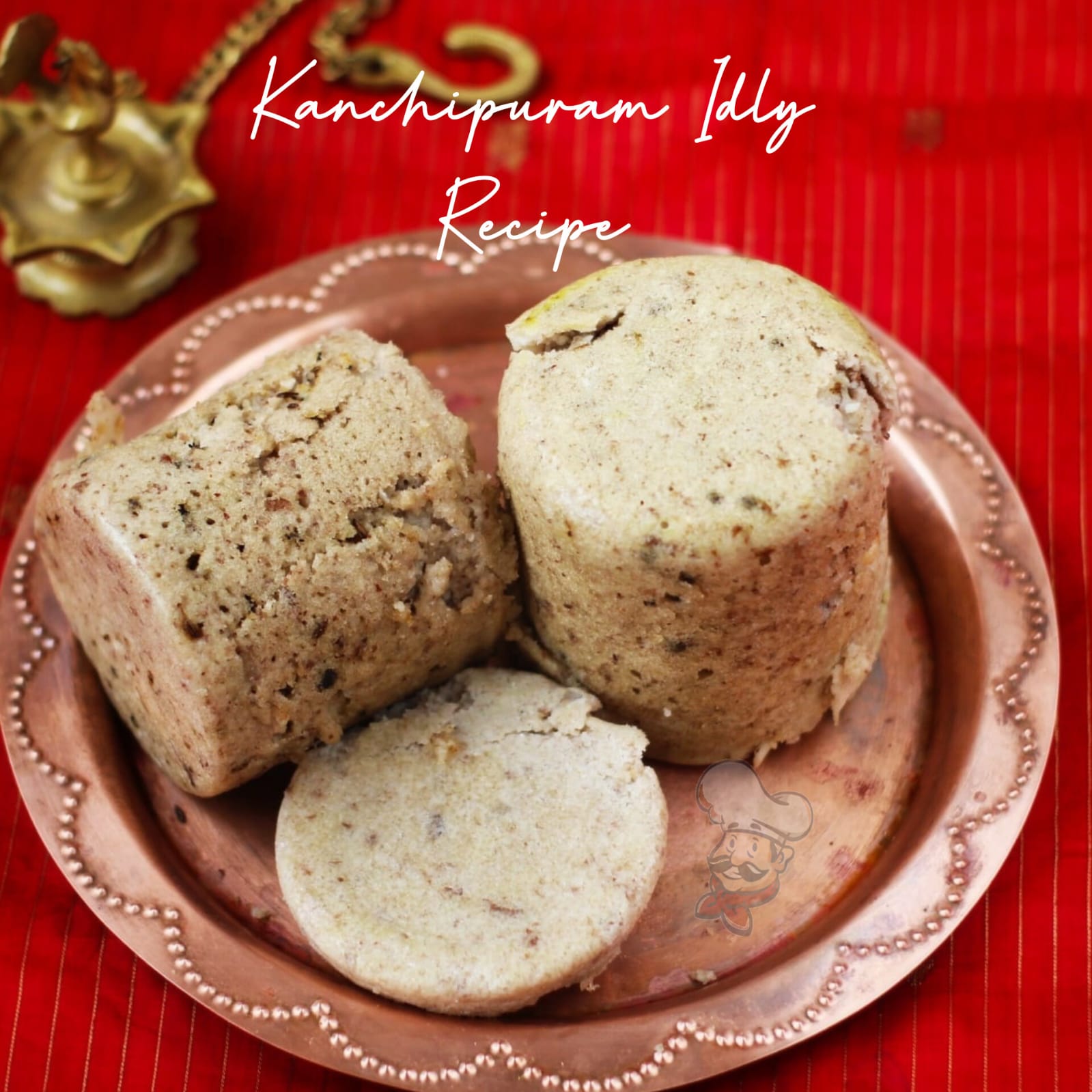
Needed Ingredients To Make Kanchipuram Kovil Idli:
Step Wise Directions To Make Kanchipuram Idli:
Rinse the idli rice and urad dal separately and soak them in water for 6-8 hours. Soak fenugreek seeds with urad dal.
Grind the urad dal, fenugreek seeds, and rice in a mixer-grinder to a smooth batter consistency. Add enough water to get the right consistency.
Transfer the batter to a large bowl, add salt and mix well.
Allow the batter to ferment for 8-10 hours, or until it has doubled in volume.
Heat a pan and add ghee to it. Once the ghee is hot, add mustard seeds, cumin seeds, and peppercorns. Sauté for a few seconds until the mustard seeds start to crackle. Then spill in some curry leaves along with dry ginger powder and asafoetida powder and immediately turn off the flame.
Add the tempering to the idli batter and mix well.
Grease a long cylindrical vessel with ghee and pour the batter into the vessel. Place it inside the idli cooker with two glasses of water at the bottom and pop the lid on.
Steam the idlis in a steamer for 15-20 minutes or a little longer until the aroma starts to waft out from the steamer.
Once the idlis are cooked, remove them from the steamer and let them cool for a few minutes.
Flip the cylindrical vessel over a large plate and tap on top to loosen it up. Wait for a second or two and slide up the cylindrical vessel from above. The long cylindrical idlis will glide down from the vessel.
Place it over a pakku matti thattu or a large donnai and serve hot with a dash of ghee.
Pro Tips:
To make the best Kanchipuram Temple Style Idli, here are some notable tips:
Use good quality ingredients: Use fresh and good quality rice, urad dal, and spices like pepper, cumin seeds, ginger, and curry leaves. This will ensure that the idli has the right texture and flavor.
Soak and grind the batter properly: Soak the rice and urad dal separately for at least 4-5 hours before grinding them into a fine batter. The batter should be smooth, fluffy, and well-fermented, giving the idli its characteristic soft texture.
Use a traditional brass or bronze vessels: The traditional brass or bronze vessels used in Kanchipuram are said to impart a unique flavor and aroma to the idli. If you don't have access to these plates, you can use a regular idli steamer.
Add the spices and seasonings: To give the idli its characteristic flavor, add spices like pepper, cumin seeds, and ginger, along with curry leaves and ghee. The spices should be roasted before being added to the batter, which will enhance their flavor and aroma.
Allow the batter to ferment properly: Fermentation is crucial to making good idlis. Allow the batter to ferment for at least 8-10 hours, or until it has doubled in volume. This will give the idli its characteristic softness and fluffy texture.
Steam the idlis properly: Steam the idlis on high heat for about 10-12 minutes or until they are cooked through. Do not overcook the idlis, as this will make them hard and dry.
Faqs:
1. What makes Kanchipuram temple style idli different from regular idlis?
The Kanchipuram temple style idlis are different from regular idlis because they are spiced with a unique blend of ingredients, which gives them a distinct flavor. Additionally, they are steamed in cups made of dried leaves, which adds to their aroma and taste.
2. Why are they called Kanchipuram temple style idlis?
Kanchipuram temple style idlis are so named because they are a popular dish served in the temples of Kanchipuram, a holy city in Tamil Nadu, India. They are often served as prasadam (offering to the deities) in the temples.
3. Can Kanchipuram temple style idlis be made without the special cups made of dried leaves as they do at the temple?
Yes, Kanchipuram temple style idlis can be made without the special cups made of dried leaves. Instead, you can use regular idli molds to steam the idlis as we have tried in this recipe. But you also get the leaf from the local stores of almost all the petty shops in Tamil Nadu, and make the idlis if you want the feel of it.
Health Benefits Of Kanchipuram Idli:
Kanchipuram Idli is a healthy and nutritious dish that offers several health benefits. Here are some of the health benefits of Kanchipuram Idli:
Low in fat and calories: Kanchipuram Idli is a low-fat and low-calorie dish that is a great option for those looking to lose weight or maintain a healthy weight.
Rich in protein: The combination of rice and urad dal used in making Kanchipuram Idli provides a complete protein source, making it an excellent option for vegetarians and vegans.
Easy to digest: The fermentation process used in making Kanchipuram Idli makes it easy to digest and improves gut health.
Rich in fiber: The combination of rice and urad dal used in making Kanchipuram Idli is a good source of dietary fiber, which helps regulate digestion and promotes satiety.
Rich in vitamins and minerals: Kanchipuram Idli is a rich source of vitamins and minerals like iron, calcium, and potassium, which are essential for maintaining good health.
Gluten-free: Kanchipuram Idli is naturally gluten-free, making it an excellent option for those with gluten intolerance or celiac disease.
Suitable Accompaniments For Kanjipuaram Idli:
Sambar: Sambar is a lentil-based vegetable stew that is a popular accompaniment for idlis in South India. It is a flavorful and tangy dish that complements the mild flavor of Kanjipuram Idli.
Coconut chutney: Coconut chutney is a creamy and mildly spicy condiment made with fresh coconut, green chili, ginger, and tempered with mustard seeds and curry leaves. It is a classic accompaniment for idlis in South India and goes well with Kanjipuram Idli.
Tomato chutney: Tomato chutney is a tangy and slightly spicy condiment made with tomatoes, onion, garlic, and tempered with mustard seeds and curry leaves. It is a great accompaniment for Kanjipuram Idli and adds a zingy flavor to it.
Idli podi: Idli podi is a flavorful and spicy powder made with lentils, spices, and dried red chilies. It is often mixed with sesame oil or ghee and served as a dip or a spread for idlis, including Kanjipuram Idli.
Ghee: Ghee is a clarified butter that is often drizzled over idlis, including Kanjipuram Idli, to add a rich and nutty flavor. And the most exciting part is that kanchipuram idli tastes the best with just a ladle of hot melted ghee and you will not need anything more than that.
Fantastic Beverages That Can Be Paired With Kanjipuram Idli:
Kanjipuram Idli pairs well with a variety of beverages, both hot and cold. Here are some popular beverages that you can enjoy with Kanjipuram Idli:
Hot:
Filter coffee: Filter coffee, also known as South Indian coffee, is a popular beverage that is often served with breakfast in South India. It is a strong and flavorful coffee that complements the mild flavor of Kanjipuram Idli.
Masala tea: Masala tea is a spiced tea made with black tea, milk, and a blend of spices such as ginger, cardamom, cinnamon, and cloves. It is a warming and flavorful beverage that goes well with Kanjipuram Idli.
Cold:
Buttermilk: Buttermilk, also known as neermor in tamil, is a refreshing and cooling beverage made with yogurt, water, and spices. It is a great option to balance the flavors of the spicy accompaniments served with Kanjipuram Idli.
Fresh fruit juice: Fresh fruit juice, such as orange, sweet lime, or watermelon, is a refreshing and healthy option to enjoy with Kanjipuram Idli. It is a great way to balance the mild and savory flavors of the idli.
Tender Coconut: Tender coconut is a natural and refreshing beverage that is a great option to hydrate and cool down after enjoying spicy accompaniments with Kanjipuram Idli.
Delectable Desserts That Go Well With Kanjipuram Idli:
Kanjipuram Idli is a savory dish that is usually served for breakfast or as a snack. It is not typically served with desserts. However, in some households or restaurants, a sweet dish might be served after the main course. Here are some desserts that are popular in South India and can be served after Kanjipuram Idli:
Payasam: Payasam is a traditional South Indian dessert made with milk, rice, jaggery, and nuts. It is a creamy and sweet dish that is often served on special occasions and festivals along with this kanchipuram idli.
Kesari: Kesari, also known as rava kesari, is a popular dessert made with semolina, sugar, ghee, and flavored with cardamom and nuts. It is a simple and delicious dessert that is often served with breakfast or as a sweet dish after a meal, and makes a best combination with this kanchipuram idli.
Pongal: Pongal is a sweet and savory dish made with rice, lentils, jaggery, and flavored with cardamom and nuts. It is a popular breakfast dish in South India and is often served with sweet accompaniments like banana or coconut chutney. And it is often served together at kanchipuram temples especially on special puja days and festivals.
Jangiri: Jangiri is a popular South Indian sweet made with urad dal flour and soaked in sugar syrup. It is a sticky and sweet dish that is often served during festivals and celebrations, and makes a lovely combination with kanchipuram idli.
Innovative Ideas To Make A Variety Of Kanchipuram Idlis:
Kanchipuram temple style idlis are traditionally prepared in small cups made of dried leaves, but you can also experiment with different shapes and sizes to make them more interesting. Here are some innovative ideas and shapes to make Kanchipuram idlis:
Flower-shaped idlis: Use a flower-shaped idli mold to create idlis that look like flowers. You can add a few drops of food coloring to the batter to make them even more colorful.
Miniature idlis: Use a mini idli mold to create bite-sized idlis that are perfect for snacks or appetizers. Serve them with a variety of chutneys and sauces for dipping.
Spiral-shaped idlis: Use a spiral-shaped idli mold to create idlis that are shaped like spirals. This is a great way to add a fun twist to traditional idlis.
Heart-shaped idlis: Use a heart-shaped cookie cutter to cut the idlis into heart shapes. This is a great idea for Valentine's Day or any other romantic occasion.
Stuffed idlis: Add a filling of your choice to the idli batter, such as cheese, veggies, or meat, to make stuffed idlis. You can also create a layered effect by alternating layers of plain and stuffed batter.
Tower-shaped idlis: Use a cylindrical mold to create tall, tower-shaped idlis. These are perfect for a fancy dinner party or special occasion.
Remember, the possibilities are endless when it comes to creating new shapes and flavors of Kanchipuram idlis. Don't be afraid to experiment and have fun in the kitchen!
The Characteristics Of Kanchipuram Idli:
Nature: Kanjipuram Idli is a steamed dish made with a batter of rice, lentils, and spices. It is a vegan and gluten-free dish that is light, healthy, and easy to digest.
Color: Kanjipuram Idli is pale white in color, with a slightly yellowish tinge from the turmeric and other spices used in the batter.
Flavor: Kanjipuram Idli has a mild, savory flavor that is complemented by the spices used in the batter, such as cumin, ginger, and black pepper. It has a slightly tangy taste from the addition of yogurt or buttermilk.
Aroma: Kanjipuram Idli has a distinct aroma that comes from the fermented batter and the spices used in it. It has a slightly sour and earthy aroma that is typical of fermented foods.
Texture: Kanjipuram Idli has a soft and spongy texture, with a slightly porous and crusty exterior with fluffy and crumbly interior. It is light and airy, making it easy to eat and digest.
Consistency: Kanjipuram Idli has a firm texture throughout, with a uniform shape and size. It is soft and tender, but not too dense or heavy.
Overall, Kanjipuram Idli is a delicious and healthy dish that is a favorite breakfast or snack for many people in South India.
Little Ideas To Serve Kanjipuram Idli:
Banana Leaf: The most authentic way to serve Kanjipuram Idli is on a banana leaf. Not only does it add an earthy flavor to the dish, but it also provides a unique texture to the idli.
Brass/Copper Plates: Kanjipuram Idli can be served on brass or copper plates, which are traditional South Indian serving vessels. These plates add a beautiful shine and elegance to the dish.
- Thai Ilai or kachnar leaf: A kind of leaf also called as 'mantharai ilai' to serve prasadam and as well as food items.
- Pakku mattai thattu/ Areca leaf plate: It is becoming quite famous to serve dishes in this plate and its also comfortable and easy to handle.
Tiffin Boxes: If you want to pack Kanjipuram Idli for a picnic or a journey, you can use tiffin boxes made of stainless steel or plastic. These boxes are lightweight, easy to carry and keep the idlis warm.
Takeaway:
Kanchipuram idli is a traditional dish that originated in Kanchipuram, a city in Tamil Nadu, India. It is made with a batter of rice, urad dal, and spices, and steamed in small, pyramid-shaped molds made of banana leaves or stainless steel.
What makes Kanchipuram idli special is its unique flavor and texture. The addition of spices such as cumin, ginger, black pepper, and curry leaves gives it a distinct taste, and the use of banana leaves or stainless steel molds gives it a slightly crispy outer layer and a soft, fluffy texture on the inside.
Kanchipuram idli is typically served with coconut chutney, sambar, and a side of potato curry. It is a popular breakfast or snack item in South India and is often served during special occasions or festivals.
Overall, Kanchipuram idli is highly regarded in South India for its delicious taste, unique flavor, and cultural significance. Its popularity continues to grow beyond South India, and it is definitely worth trying if you have the opportunity!
Ingredients
Directions
Rinse the idli rice and urad dal separately and soak them in water for 6-8 hours. Soak fenugreek seeds with urad dal.
Grind the urad dal, fenugreek seeds, and rice in a mixer-grinder to a smooth batter consistency. Add enough water to get the right consistency.
Transfer the batter to a large bowl, add salt and mix well.
Allow the batter to ferment for 8-10 hours, or until it has doubled in volume.
Heat a pan and add ghee to it. Once the ghee is hot, add mustard seeds, cumin seeds, and peppercorns. Sauté for a few seconds until the mustard seeds start to crackle. Then spill in some curry leaves along with dry ginger powder and asafoetida powder and immediately turn off the flame.
Add the tempering to the idli batter and mix well.
Grease a long cylindrical vessel with ghee and pour the batter into the vessel. Place it inside the idli cooker with two glasses of water at the bottom and pop the lid on.
Steam the idlis in a steamer for 15-20 minutes or a little longer until the aroma starts to waft out from the steamer.
Once the idlis are cooked, remove them from the steamer and let them cool for a few minutes.
Flip the cylindrical vessel over a large plate and tap on top to loosen it up. Wait for a second or two and slide up the cylindrical vessel from above. The long cylindrical idlis will glide down from the vessel.
Place it over a pakku matti thattu or a large donnai and serve hot with a dash of ghee.

